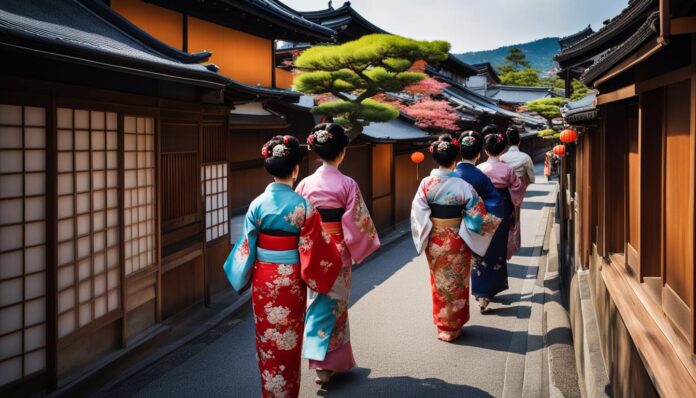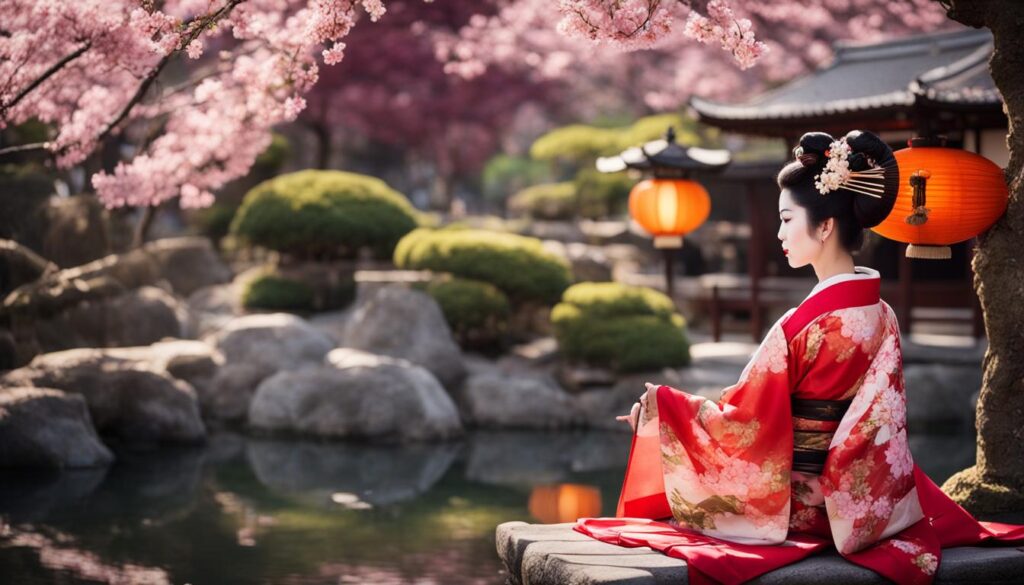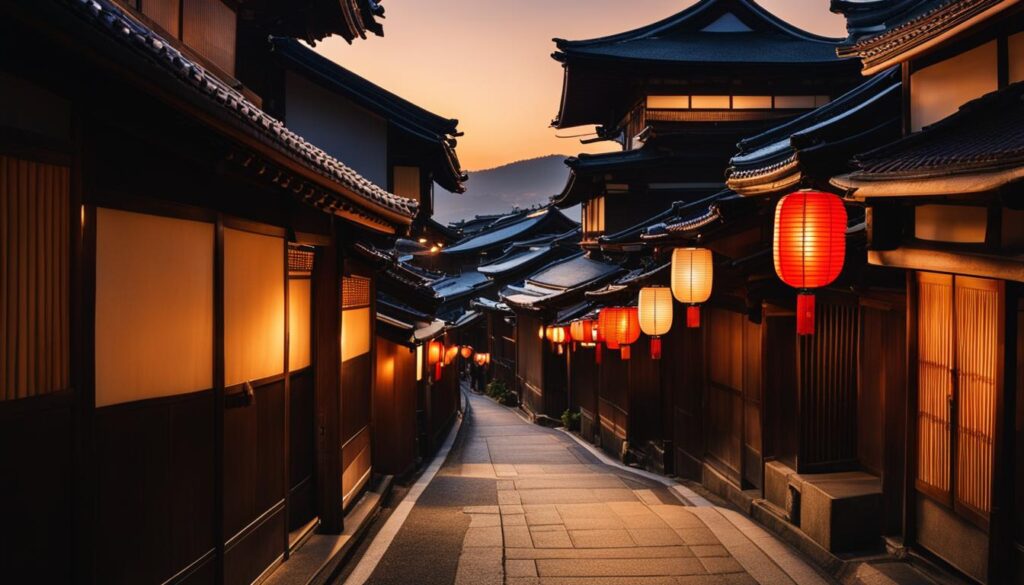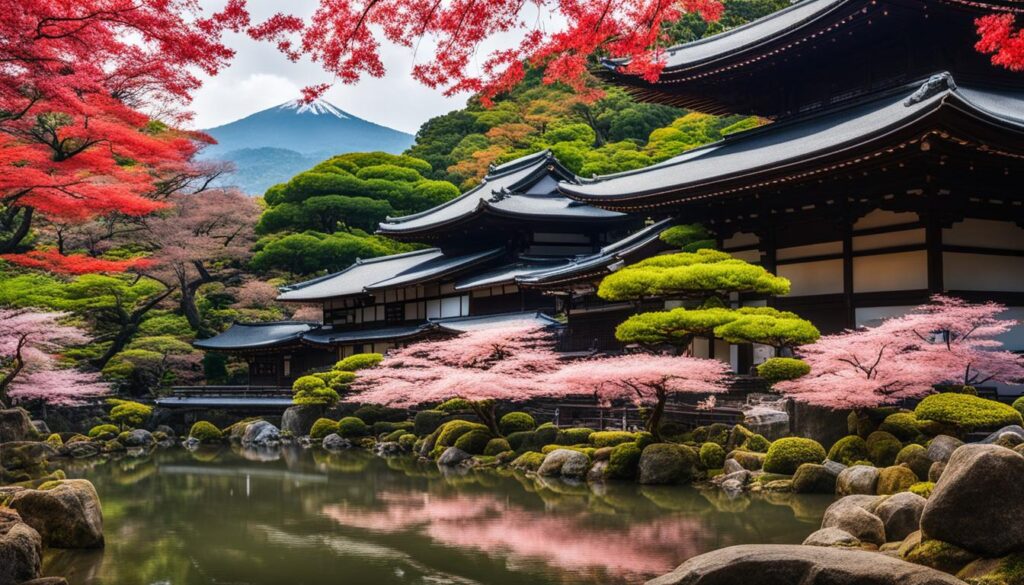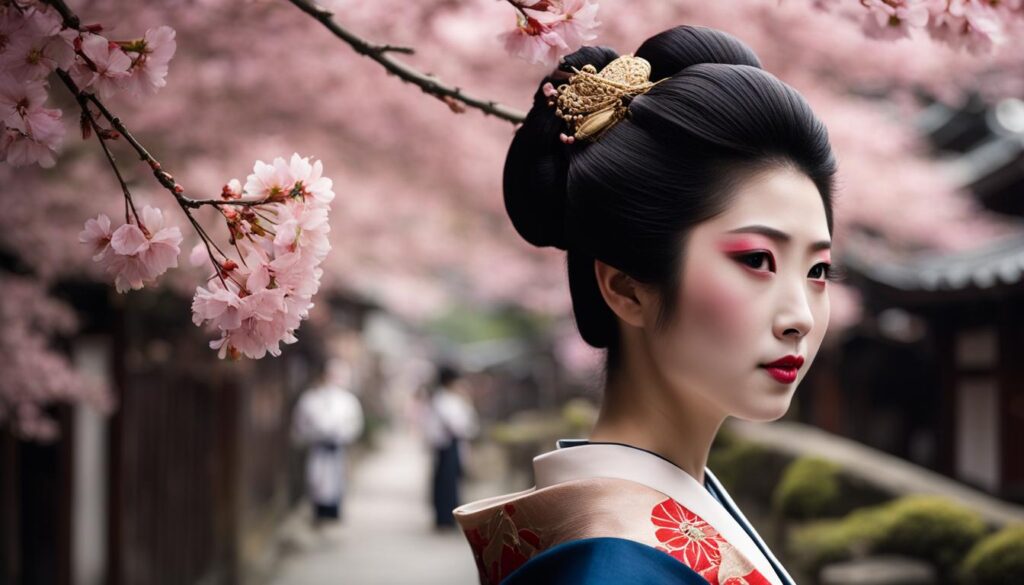Discover the wonder of Kyoto geisha districts and traditional entertainment, a true feast for the senses. This historic city boasts a rich cultural heritage that is beautifully preserved in its geisha culture and traditional performances. Immerse yourself in the artistry of geishas and experience the vibrant energy of Kyoto’s traditional entertainment. In this article, we’ll guide you through the enchanting world of Kyoto geisha districts and traditional entertainment, uncovering the secrets and intricacies of this beloved Japanese culture.
Embark on a journey through cultural time and explore the district’s ancient streets, traditional teahouses, and stunning architecture, which make up Kyoto’s geisha districts. Experience the captivating world of traditional performances, from elegant tea ceremonies to mesmerizing dance performances. Learn about the rigorous training and art forms that geishas master, and discover the efforts made to preserve Kyoto’s geisha culture for future generations to enjoy. Come along with us on a journey of discovery as we explore Kyoto’s geisha districts and traditional entertainment.
Understanding the Geisha Culture
Discover the fascinating world of geisha culture and traditions in Japan. Geishas, also known as “geiko” in Kyoto dialect, are highly skilled entertainers who are trained in various Japanese arts. Their elegant kimono attire, intricate hairstyles, and flawless makeup have captivated people for centuries.
The history of geishas dates back to the 18th century in the Edo period when they were known as “taikomochi,” male entertainment known for their witty banter, songs, and dance performances. Later on, women began to perform in the same role and eventually became known as geishas.
In Kyoto, the tradition of geishas is still thriving, and the preservation of their culture is of utmost importance. Geishas play an essential role in preserving the cultural heritage of Kyoto by pursuing various traditional Japanese arts, including tea ceremony, ikebana flower arrangement, shamisen music, and dance performances.
Did You Know? Apprenticeship for geishas, known as “maiko” in Kyoto dialect, begins at a young age of 15 or 16, and it takes about five years of rigorous training to become a full-fledged geisha.
Exploring Kyoto’s Geisha Districts
The Kyoto geisha districts are a must-see for anyone visiting the city. These vibrant neighborhoods are steeped in history and tradition, offering a glimpse into the cultural heritage of Kyoto.
There are five main geisha districts in Kyoto: Gion Kobu, Gion Higashi, Pontocho, Kamishichiken, and Miyagawa-cho. Each district has its unique charm and distinct characteristics, with a variety of traditional teahouses, shops, and restaurants.
Gion Kobu is the most famous of the geisha districts, with a rich history dating back to the Edo period. Visitors can stroll down the charming streets and admire the stunning architecture, including the historic Kaburenjo Theater.
The Pontocho district is known for its narrow alleys and traditional wooden buildings. Here you can find an array of charming teahouses and restaurants, many of which have been around for generations.
Kamishichiken is the oldest of Kyoto’s geisha districts, dating back over 500 years. Visitors can enjoy traditional performances at the Kamishichiken Kaburenjo Theater, or admire the beautiful gardens of the Kitano Tenmangu Shrine.
Miyagawa-cho is a smaller geisha district, known for its relaxed and cozy atmosphere. Here you can find an array of boutique shops and restaurants, including the iconic Kennin-ji Temple, which dates back to the 13th century.
Visiting the Kyoto geisha districts is an unforgettable experience that allows you to immerse yourself in the culture of old Japan. Take your time exploring each neighborhood and savor the sights, sounds, and tastes of Kyoto’s rich cultural heritage.
Traditional Entertainment in Kyoto
Kyoto is home to some of the most enchanting traditional entertainment options in Japan. From elegant tea ceremonies to mesmerizing dance performances, Kyoto combines history, culture, and entertainment to create truly unforgettable experiences.
Kyoto’s traditional performances are rooted in ancient traditions, dating back centuries. These performances are the perfect way to experience the cultural richness and heritage of Kyoto.
Tea Ceremonies
Indulge in the serene and relaxed atmosphere of Kyoto’s tea ceremonies. These ceremonies are a true reflection of Japanese culture, highlighting discipline, precision, and hospitality. You’ll be served traditional Japanese sweets and a bowl of matcha, a type of powdered green tea that is a staple of Japanese tea ceremonies.
Kabuki Theater
Kabuki is an ancient form of Japanese theater that originated in Kyoto in the early 1600s. This unique theatrical form combines dance, drama, and music to tell captivating stories. You’ll be amazed by the elaborate costumes and intricate makeup of the performers, as well as the stunning stage sets and special effects.
Geisha Performances
Geisha are traditional Japanese entertainers who have undergone years of training in the arts of dancing, singing, and other cultural forms. They are an integral part of Kyoto’s culture, and their talents are showcased in various performances throughout the city. You can experience a geisha performance firsthand by attending a private event or visiting a teahouse where a geisha performance is scheduled.
Noh Theater
Noh theater is another ancient Japanese theatrical form that has deep roots in Kyoto’s cultural history. This form of theater involves intricate costumes, masks, and music to create a hauntingly beautiful performance. You’ll be captivated by the deep, philosophical themes explored in Noh theater performances.
Must-Visit Historical Sites in Kyoto
Explore the rich cultural heritage of Kyoto by visiting its iconic historical sites. These sites offer a glimpse into the city’s fascinating past and showcase its impressive architectural feats.
One must-visit site is the renowned Kiyomizu-dera Temple. This temple, which dates back to the 8th century, is renowned for its stunning views of the city and is considered a UNESCO World Heritage Site. Another UNESCO site is the Nijo Castle, a majestic fortress constructed in 1603.
For a glimpse into the spiritual side of Kyoto, visit the iconic Fushimi Inari Taisha shrine. Walk under the thousands of torii gates that form a tunnel-like structure and witness the serene beauty of the complex.
Other notable historical sites in Kyoto include the Kinkaku-ji Temple, also known as the Golden Pavilion, and the Ryoan-ji Temple, famous for its rock garden and excellent representation of Zen Buddhism.
Come and immerse yourself in Kyoto’s rich history and witness firsthand the city’s fascinating cultural heritage.
Geisha Culture and Traditions
Geisha culture is an integral part of Japanese history and traditions. Geishas are highly skilled female artists who have dedicated their lives to mastering various art forms, such as music, dance, and poetry. They undergo rigorous training starting at a young age and are required to adhere to strict protocols and customs.
Geishas are known for their elaborate attire, which includes a stunning kimono, hair ornaments, and white makeup. The white makeup is used to cover their face, neck, and chest, while their lips are colored in red. The striking look enhances their beauty and helps to create an aura of mystique and intrigue.
Geishas often perform in traditional teahouses, where they entertain guests with their art forms, exquisite conversation, and impeccable manners. In addition to entertaining, geishas also play a vital role in preserving the cultural heritage of Kyoto.
“To be a geisha is to be judged as a moving work of art”.
The Art Forms of Geishas
Geishas spend years mastering several art forms. The three primary forms are:
| Art Form | Description |
|---|---|
| Music | Playing traditional instruments such as shamisen and koto and singing to entertain guests. |
| Dance | Performing traditional dances such as Miyako Odori, which tells the story of Kyoto’s four seasons through dance. |
| Poetry | Composing and reciting haiku or tanka poetry for guests. |
Mastering these art forms requires discipline, dedication, and a deep appreciation for Japanese culture and traditions. Geishas continue to thrive in Kyoto’s geisha districts, where they offer visitors an exceptional cultural experience.
Traditional Performances in Kyoto
Discover the captivating world of traditional entertainment in Kyoto. Immerse yourself in the mesmerizing performances that showcase the essence of Kyoto’s cultural traditions. From classical music performances to theater shows, Kyoto provides a range of delightful experiences that visitors can enjoy.
One of the most renowned traditional performances in Kyoto is kabuki, a form of classical Japanese dance-drama known for its elaborate costumes and makeup. Another must-see performance is bunraku, a puppet theater show that dates back to the 17th century.
For those interested in music, Kyoto offers gagaku, an ancient court music performed on traditional Japanese instruments. Other traditional music performances include shakuhachi, a bamboo flute performance, and koto, a string instrument performance.
For a complete experience of Kyoto’s cultural traditions, make sure to catch a maiko (apprentice geisha) performance. Their exquisite dance performances and musical skills will leave you in awe of the rich geisha culture in Japan.
“The traditional performances in Kyoto are truly captivating. They showcase the unique cultural traditions and rich heritage of the city.”
An Insider’s Guide to Kyoto Geisha Districts
If you’re planning a visit to Kyoto, exploring the city’s geisha districts is a must-do experience. To make the most of your time in these enchanting neighborhoods, we’ve put together an insider’s guide with tips and recommendations.
Best Times to Spot Geishas
Geishas are more active during the evening hours, typically between 6 pm and 9 pm. However, they can also be spotted during the day, especially on weekends and during festivals.
Top Geisha Districts to Visit
Each geisha district in Kyoto has its unique charm and character. Gion, the most famous district, is a great place to start. You can also explore the charming streets of Pontocho and the old-world ambiance of Miyagawa-cho.
Where to Enjoy Traditional Cuisine
While there are plenty of dining options in Kyoto’s geisha districts, not all provide an authentic experience. To truly immerse yourself in the culture, head to restaurants that specialize in kaiseki cuisine. These multi-course meals feature traditional Japanese dishes and often come with a high price tag, but the experience is well worth it. Try establishments like Ichiriki or Kikunoi.
How to Respectfully Appreciate the Culture
While it’s tempting to take photos of geishas and their beautiful attire, it’s essential to be respectful of their privacy. Avoid approaching them directly or engaging them in conversation. Instead, observe them from a distance and appreciate their beauty and elegance from afar.
Preserving Kyoto’s Geisha Culture
Kyoto’s geisha culture is a priceless national treasure. It is vital to accomplish all possible efforts to retain and preserve the unique cultural heritage that geishas represent.
To support the continuation of geisha culture, several organizations, such as the Maiko and Geiko Association of Kyoto, have been established. They offer various programs and educational opportunities to promote the cultural significance of geishas and their traditional performances.
Additionally, the local government of Kyoto has taken on initiatives to preserve the city’s geisha culture. The city established the Institute for Cultural Studies of Ancient Capitals, whose primary purpose is to protect and preserve the cultural heritage of Kyoto and is responsible for producing, organizing, and promoting cultural events.
The dedication and perseverance of these organizations and initiatives play a crucial role in securing the longevity of Kyoto’s geisha culture.
“The geisha who is known and admired today presents an image of consummate beauty and dignified reserve which is like a Concorde landing in a grassy field.” – Arthur Golden, Memoirs of a Geisha
Conclusion
Congratulations on your enlightening journey through Kyoto’s geisha districts and traditional entertainment. From exploring the cultural heritage of Kyoto to experiencing the vibrant world of traditional performances, you surely had an unforgettable experience.
The traditional entertainment in Japan is unlike any other, and Kyoto offers a unique blend of ancient and modern cultural experiences. By immersing yourself in the geisha culture, visiting historical sites, and enjoying traditional performances, you have gained a deeper appreciation for Japan’s rich heritage.
We hope this article has encouraged you to plan a visit to Kyoto and experience the beauty of its geisha districts and traditional entertainment firsthand.




























